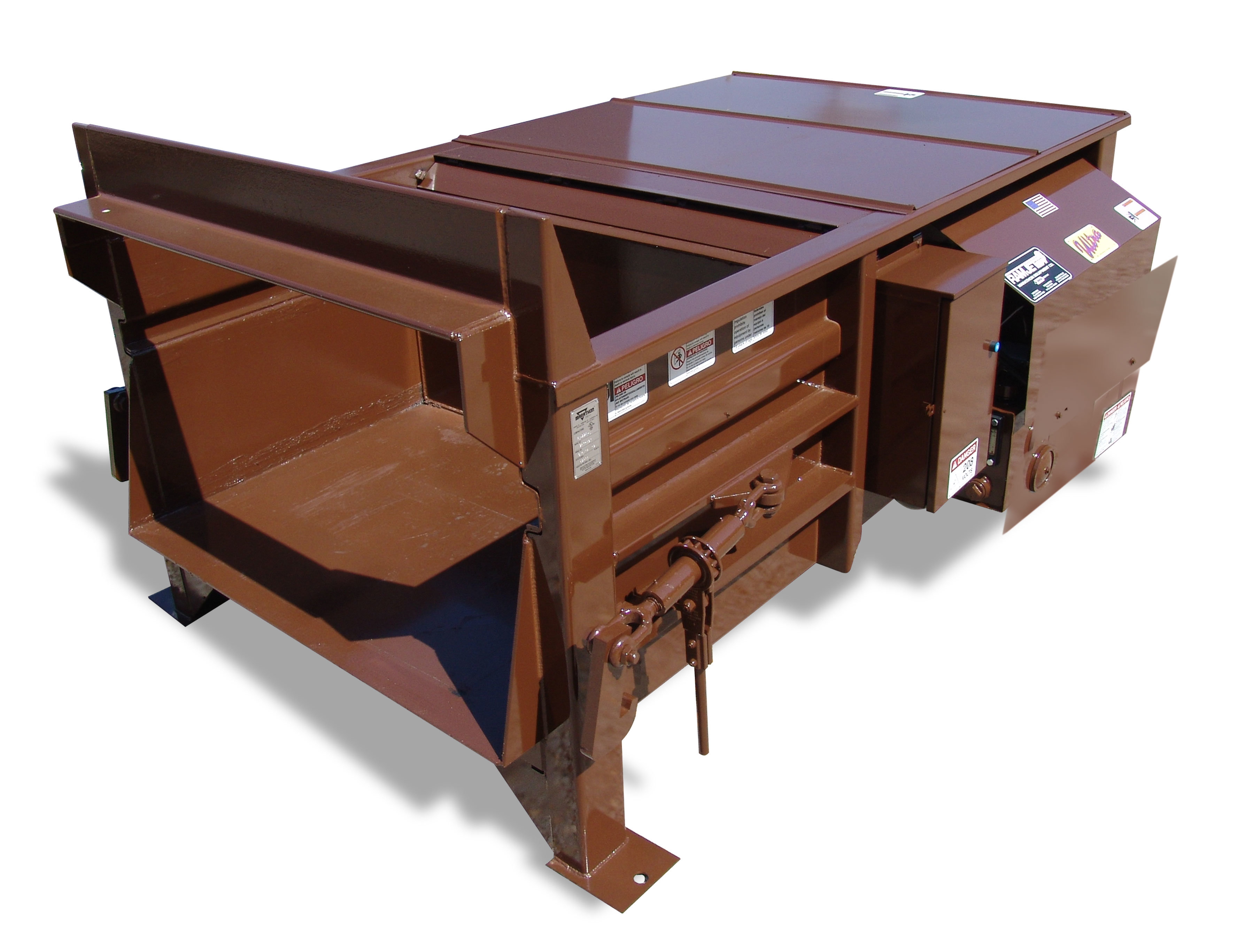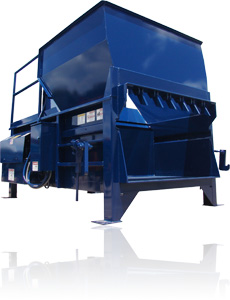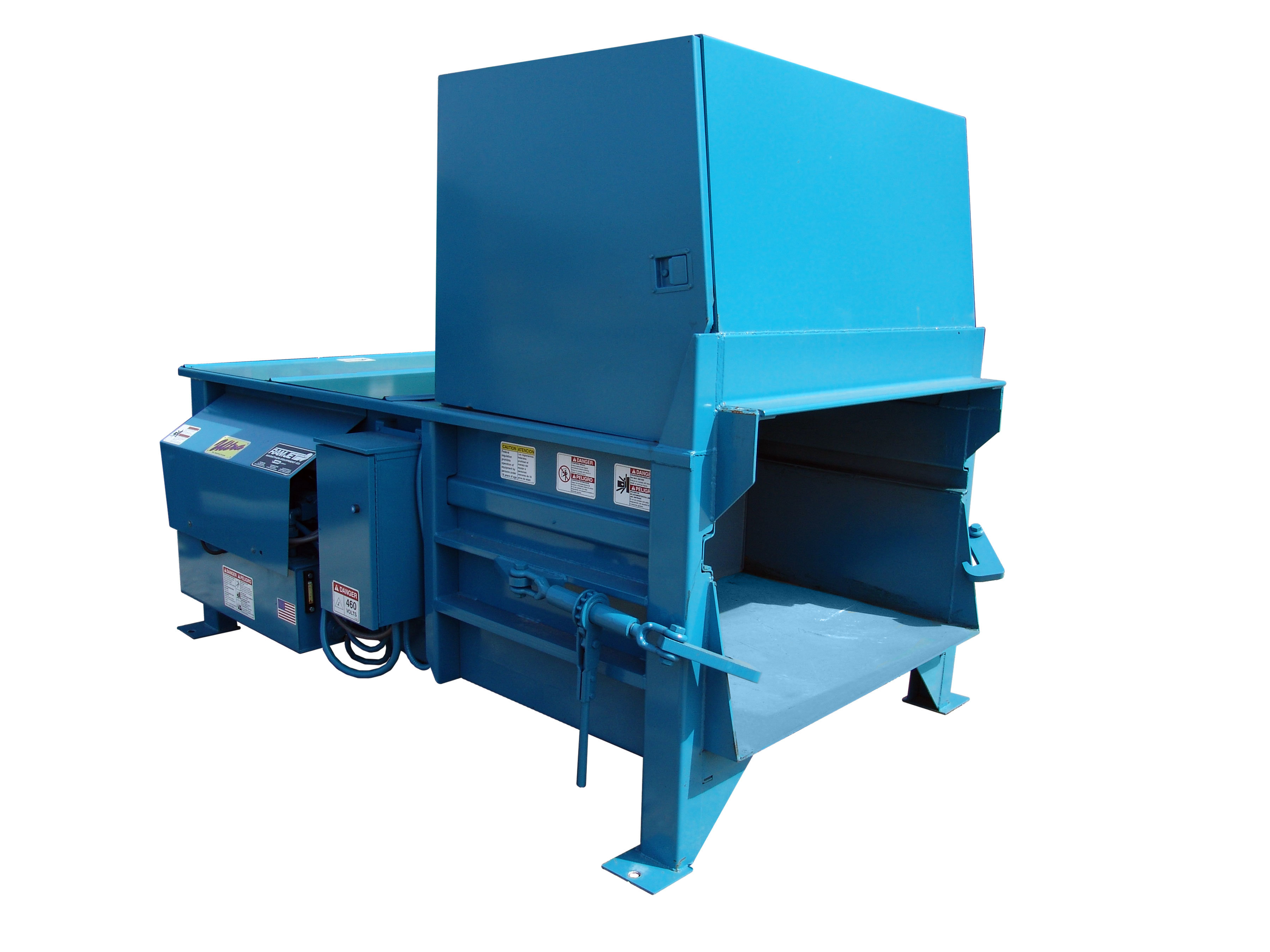Why more businesses are choosing Industrial waste compaction equipment today
Wiki Article
Comprehending the Various Uses Waste Tools in the Recycling Industry
The recycling sector relies greatly on specialized waste devices to optimize processing and recuperation. Each tool, from shredders to balers, serves a distinctive function that enhances general efficiency. Comprehending these duties is crucial for enhancing sustainability initiatives. Commercial garbage compaction equipment. As technology advancements, new innovations emerge, assuring to transform standard practices. This evolution elevates essential inquiries about the future of waste management and its effect on environmental preservation. What modifications exist in advance for this important sector?The Duty of Shredders in Product Processing
Shredders play an essential function in the recycling market by effectively processing various kinds of waste materials. These equipments are developed to reduce large products, such as plastics, metals, and organic waste, into smaller sized, convenient items. This size reduction is necessary for succeeding recycling processes, as it permits less complicated handling and sorting. In enhancement to helping with recycling, shredders enhance safety and security by decreasing the threat of injury linked with taking care of cumbersome waste things.Shredders add to environmental sustainability by ensuring that materials are refined in a way that makes best use of resource healing. They can handle a varied variety of materials, making them functional tools in waste management facilities. The effective procedure of shredders not only improves the recycling procedure however also enhances the overall effectiveness of waste diversion initiatives, promoting a circular economic situation. Their importance in product processing can not be overemphasized, as they act as a foundational step towards lasting waste management techniques.

How Balers Enhance Effectiveness in Waste Management
Balers substantially boost effectiveness in waste administration by condensing numerous products into bundles, which streamlines storage space and transport. By pressing recyclables such as cardboard, plastics, and steels, balers considerably decrease the volume of waste. This compression not only makes best use of room in reusing facilities however likewise lessens the number of trips required to transport materials, leading to reduced gas prices and minimized ecological effect.Furthermore, balers add to enhanced safety in waste administration operations. Small bales are easier to handle and pile, decreasing the threat of accidents related to loose products. The consistent size of bundles enables much more reliable loading and unloading procedures, enhancing procedures within recycling facilities. Furthermore, balers can improve the overall high quality of recyclables, as effectively compacted materials are less most likely to be contaminated. On the whole, balers play a vital duty in maximizing waste administration practices, promoting sustainability in the reusing industry.
Conveyor Solutions: Streamlining the Recycling Process
Incorporating advanced machinery like balers greatly improves waste management operations, but the effectiveness of the recycling process is even more improved via making use of conveyor systems. These systems play a necessary duty in the seamless transport of materials within recycling centers. By helping with the activity of numerous waste kinds, conveyor systems decrease manual handling and minimize the threat of contamination during the reusing process.Conveyor systems can be customized to fit the distinct layouts and operational requirements of reusing Commercial trash compactor equipment centers. Their ability to run continually allows for a constant flow of materials, enhancing efficiency and guaranteeing that refining and arranging tools obtains a regular supply.
Outfitted with features like adjustable speeds and automated controls, conveyor systems can enhance the flow of materials, significantly improving total effectiveness (Commercial garbage compaction equipment). As a result, these systems are vital in contemporary recycling procedures, enhancing processes and adding to efficient waste management
Sorting Equipments: The Secret to Product Healing
Arranging machines are important parts in the recycling sector, substantially improving the performance of material healing. These makers play an essential function in the splitting up of numerous recyclable products, enabling a structured process that makes best use of source removal. By utilizing innovative technologies, such as optical sensors and air classifiers, sorting equipments can determine and categorize products based on their weight, make-up, and dimension. This ability ensures that steels, plastics, and paper products are successfully separated, reducing contamination and enhancing the top quality of recycled outcome.The procedure of sorting machines considerably lowers the reliance on manual work, which can be both susceptible and taxing to errors - Commercial garbage compaction equipment. In addition, the automation provided by these makers accelerates the general recycling process, causing greater throughput and increased functional performance. Subsequently, arranging devices are essential in achieving sustainable waste management goals, enabling the recycling sector to efficiently recuperate important products while reducing garbage dump dependence

Innovations in Waste Equipment for a Sustainable Future
Recent developments in waste tools are driving the reusing industry toward an extra lasting future. Advancements such as automated arranging systems, which utilize expert system and maker learning, boost effectiveness by accurately recognizing and separating recyclables. This causes higher healing rates and decreased contamination. Furthermore, growths in compacting innovation enable a lot more effective transportation of products, reducing carbon impacts throughout transit.Additionally, developments in shredding devices enhance the processing of complicated products, making it possible for the recycling of products that were as soon as regarded non-recyclable. The assimilation of eco-friendly power resources, like solar energy, in waste handling facilities additionally adds to sustainability objectives. In addition, developments in eco-friendly materials and waste-to-energy technologies are improving the landscape of waste monitoring. Jointly, these innovations signify a transformative shift within the recycling sector, advertising not just ecological security yet additionally economic practicality for future generations.
Regularly Asked Concerns
What Types of Products Can Waste Equipment Handle?
The kinds of materials waste tools can manage include plastics, steels, paper, glass, and organic waste. Each tools kind is created for particular products, optimizing performance and efficiency in arranging and processing numerous waste streams.Exactly How Frequently Should Waste Devices Be Kept?

Exist Safety Worries With Making Use Of Waste Tools?
Safety and security worry about making use of waste equipment include possible injuries from mechanical breakdowns, exposure to dangerous products, and poor training. Appropriate upkeep, regular examinations, and worker education are vital to alleviate these dangers efficiently in any setup.What Is the Typical Life Expectancy of Recycling Equipment?
The average life-span of reusing equipment normally varies from 10 to 20 years, depending on variables such as usage strength, maintenance techniques, and technological developments, which can substantially influence durability and performance over time.Just How Is Waste Equipment Powered in Recycling Facilities?
Waste devices in recycling centers is commonly powered by electrical energy, though some devices might use alternative energy resources like gas or diesel. This power makes it possible for effective processing and makeover of materials for recycling objectives.Shredders play a crucial duty in the recycling industry by effectively processing different kinds of waste materials. They can deal with a varied array of products, making them versatile devices in waste management facilities. Balers considerably enhance efficiency in waste monitoring by compacting various materials right into bales, which streamlines storage space and transport. The types of materials waste equipment can take care of include plastics, steels, paper, glass, and organic waste. Security issues with using waste devices consist of potential injuries from mechanical breakdowns, direct exposure to unsafe materials, and poor training.
Report this wiki page